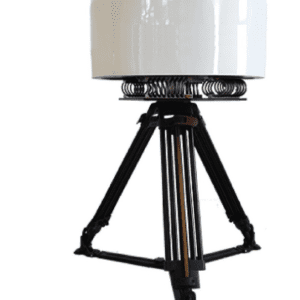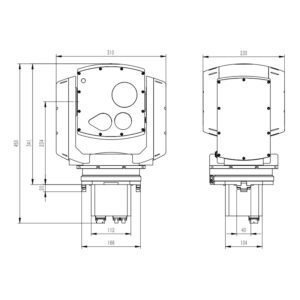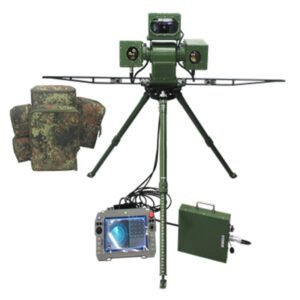1.1.1 Product Introduction
Spectrum detection equipment detects, identifies, and locates the uplink and downlink remote control signals and image transmission signals of unmanned aerial vehicles (UAVs), achieving detection, tracking, and early warning of UAVs (remote controllers). Spectrum detection equipment belongs to passive detection equipment, does not actively emit electromagnetic signals, and is green and safe.
The full frequency interference equipment adopts open and agile interference technology, which can suppress the receiving channels of navigation signals, remote control signals, and image transmission signals of drones, making them unable to locate and lose control, thereby achieving the goal of rejecting invading drones. The frequency scanning speed is fast, the antenna energy density is high, and the frequency agility is strong. It is widely used for frequency hopping control signal interference of unmanned aerial vehicles. The design of digital modulation sources can quickly generate new system unmanned aerial vehicle interference signals. The suppression efficiency is significantly improved, the interference response time is shortened, and it is suitable for urban station deployment needs. The interference device uses an intelligent servo system as the motion carrier and has the ability to control drone targets at a long distance and 360 °.
1.1.2 Functional characteristics
- TDOA+AOAhybrid positioning system: It can achieve both single station AOA direction finding and multi-point deployment networking to achieve TDOA precise positioning, with higher scene adaptability;
- Strong environmental learning ability: possessing environmental learning ability, capable of quickly building on-site libraries for non signal feature libraries of unmanned aerial vehicles and specific electromagnetic targets, updating and expanding existing feature libraries;
- High real-time performance andlow false alarm rate: Signal reception, RF processing, and signal processing are all completed at the detection front-end, improving the real-time performance of information detection; The unique small signal recognition technology ensures accurate and reliable recognition results, greatly reducing false alarms and missed alarms;
- Good scene adaptability: Introducing noise cancellation and multiple energy accumulation algorithms can ensure high recognition rate and low false alarm rate of drone targets even in complex electromagnetic environments in cities.
1.1.3 performance index
Table 2 Performance indicators of fixed detection and countermeasures equipment
| index | parameter |
| HSR-DF01 detection unit | |
| Detection signal type | Drone data transmission signal, drone remote control signal, WIFI system drone signal |
| Detecting wireless signal frequency bands | 300MHz~6GHz |
| Angle measurement accuracy (AOA mode) | ≤ 3 ° (RMS) |
| Positioning accuracy (TDOA mode) | The positioning accuracy of multi station equipment within the station is ≤ 30m, and the positioning accuracy outside the station is ≤ 100m |
| Detection radius | ≥ 5km |
| Detection range | Horizontal 360 °, pitch > ± 45 ° |
| Discovery time | ≤ 3s |
| Whitelist function | Can achieve identification of friend or foe |
| HSR-JF01 Reaction Unit | |
| Action frequency band | Customizable frequency band in 300MHz~6GHz software |
| Interference distance | ≥ 3km (0.1W radiation source), effective distance can be adjusted by software |
| Dry to dry ratio | 10: 1 |
| Interference angle | 360 ° (pan tilt implementation) |
| Effective time of interference | ≤ 3s |
| Pan tilt rotation speed | Horizontal 0.02 °~60 °/s; Pitch 0.02 ° to 30 ° |
| Connection method | Ethernet interface |
| Power supply method | AC220V ± 10%, 50Hz |
1.1.4 Applicable scenarios
Suitable for important facility protection, public security patrols, protection of dignitaries, border security, large-scale event support, military management zones, and other scenarios.
Discover more from SHENZHEN LEISHI SENSING OPTOELECTRONICS CO., LTD.
Subscribe to get the latest posts sent to your email.







Reviews
There are no reviews yet.